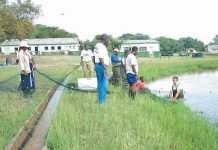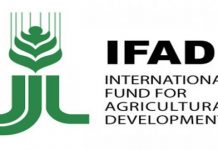[ad_1]
In 2005, the largest lagoon ecosystem in Southeast Asia
was in biological, social and economic disarray. Ponds were constructed illegally or in areas that constricted the lagoon’s tidal circulation, mangroves had been cut to make room for aquaculture development, and unregulated fishing had led to overfishing and depletion. In short, the situation threatened the food, nutrition and income security of the 300.000 people in Viet Nam’s Hue province who relied on the lagoon. Today, thanks to the response of local people, and capacity
development in the FAO Integrated Management of Lagoon
Activities (IMOLA) project, a lagoon-wide census has set
targets for reducing the number of aquaculture ponds, and
essential habitats such as mangroves are being replanted.
[ad_2]
Source link
Home AquaCulture




